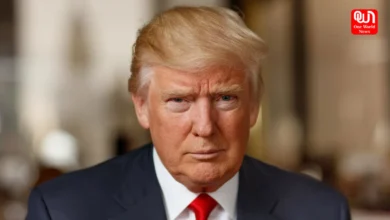What Kind of Leader are you? 10 Types of leaders and their strength

Different types of leaders and their working style
Leadership is one of the important traits required to be successful in your respective careers. According to one of the famous research, leadership style is the way a person uses power to lead other people. Research has identified a variety of leadership styles based on the number of followers. The most appropriate leadership style depends on the function of the leader, the followers and the situation. Some leaders cannot work comfortably with a high degree of followers’ participation in decision making. Some employers lack the ability or the desire to assume responsibility. Furthermore, the specific situation helps determine the most effective style of interactions. Sometimes leaders must handle problems that require immediate solutions without consulting followers. If you are not a born leader, then no need to worry guys because it’s a quality that can be develop in later years of your life.

Different leadership styles you need to know!
There are various leadership styles but here we have mentioned 10 different types of ways people tend to lead organizations or other people. Not all of these styles would fit for all kind of situations, you can read them through to see which one fits right to your company or situation. Different leaders fits in different situation.
Also Read: Effective Ways To Maintain Healthy Relationship With The ‘Queen’ (Female Boss)
1. Autocratic Leadership: Autocratic leadership style is centered on the boss. In this particular leadership style, the leader holds all authority and responsibility. In this leadership, leaders make decisions on their own without consulting subordinates. In other words, they are too bossy and do not love to interact with subordinates. Autocratic work environment does normally have little or no flexibility.In this kind of leadership, guidelines, procedures and policies are all natural additions of an autocratic leader. These kind of leaders are not welcomed by others. Example of this type of leadership is Donald Trump (Trump Organization).
2. Democratic Leadership: As the name suggests democratic leaders are open to everyone. In this leadership style, subordinates are involved in making decisions. Unlike autocratic, this headship is centered on subordinates’ contributions. The democratic leader holds final responsibility, but he or she is known to delegate authority to other people, who determine work projects.The most unique feature of this leadership is that communication is active upward and downward. In most of the situations these leaders are welcomed. Jawaharlal Nehru is the best example for this leadership.
3. Strategic Leadership Style: Strategic leadership is one that involves a leader who is essentially the head of an organization. The strategic leader is not limited to those at the top of the organization. It is geared to a wider audience at all levels who want to create a high performance life, team or organization.The strategic leader fills the gap between the need for new possibility and the need for practicality by providing a prescriptive set of habits.
4. Transformational Leadership: Unlike other leadership styles, transformational leadership is all about initiating change in organizations, groups, oneself and others. It is basically about bringing a change. Transformational leaders motivate others to do more than they originally intended and often even more than they thought possible. They set more challenging expectations and typically achieve higher performance.
5. Team Leadership: Team leadership involves the creation of a vivid picture of its future, where it is heading and what it will stand for. The vision inspires and provides a strong sense of purpose and direction.Team leadership is about working with the hearts and minds of all those involved. It also recognizes that teamwork may not always involve trusting cooperative relationships. The most challenging aspect of this leadership is whether or not it will succeed.

6. Cross-Cultural Leadership: This form of leadership normally exists where there are various cultures in the society. This leadership has also industrialized as a way to recognize front runners who work in the contemporary globalized market.Organizations, particularly international ones require leaders who can effectively adjust their leadership to work in different environments. Well, most of the leaderships observed in the United States are cross-cultural because of the different cultures that live and work there.
7. Facilitative Leadership: Another leadership style came into the picture is facilitative Leadership is too dependent on measurements and outcomes – not a skill, although it takes much skill to master. The effectiveness of a group is directly related to the efficacy of its process. If the group is high functioning, the facilitative leader uses a light hand on the process.On the other hand, if the group is low functioning, the facilitative leader will be more directives in helping the group run its process. Facilitative leaders are most effective leaders of the society.
8. Laissez-faire Leadership: Laissez-faire leadership gives authority to employees. It’s name clearly suggest. According to research, this kind of leadership has been consistently found to be the least satisfying and least effective management style.
9. Transactional Leadership: This is a leadership that maintains or continues the status quo. It is also the leadership that involves an exchange process, whereby followers get immediate, tangible rewards for carrying out the leader’s orders. Transactional leadership can sound rather basic, with its focus on exchange.
10. Charismatic Leadership : Last but not the least,In this leadership, the charismatic leader manifests his or her revolutionary power. Charisma does not mean sheer behavioral change. It actually involves a transformation of followers’ values and beliefs.
Have a news story, an interesting write-up or simply a suggestion? Write to us at info@oneworldnews.in







